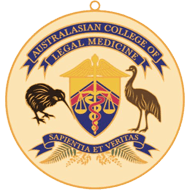
Frequently Asked Questions

Atrophic vaginitis: hormone deficient with thinning of the vaginal skin.
Catamenial migraine: headaches triggered by low oestrogen levels.
Cervical Incompetence: where the uterine cervix fails to remain closed leading to late miscarriage.
Chlamydia: a specific STD which is often silent but causes tubes to become blocked.
CIN: precancerous condition of cervix.
Colposcopy: a telescopic examination of the vulva or cervix looking for precancerous change.
Cryotherapy: freezing the cervix for a few minutes to treat precancerous or inflammatory tissue.
Ectopic pregnancy: where the pregnancy sits in the fallopian tube, which can rupture.
Endometrial biopsy: an office procedure where a fine tube is passed through the cervix to obtain uterine tissue for analysis.
Endometriosis: the uterine lining grows elsewhere causing pain and scarring.
Fetal alcohol syndrome: rare cause of physical and mental retardation, caused by binge or heavy consumption in pregnancy.
Fibroids: common lumps which grow on the uterus: the vast majority are benign.
Gestational Diabetes: where blood sugars are too high leading to increased risks to the baby.
Hymenorrhaphy: where the hymen is restored for cultural reasons.
Hysterectomy: removal of the uterus.
Hysteroscopy: a telescope is placed through the cervix to see the lining of the uterus.
Implanon: a contraceptive rod inserted under the skin of the upper arm.
Laparoscopy: a telescope is placed through the umbilicus to see pelvic organs
LEEP/LLETZ: office procedures using diathermy under local anaesthetic to treat CIN.
Lichen Sclerosis: degenerative condition of vulva with loss of protective elements of skin.
Menorrhagia (heavy periods): mostly managed now without the need for major surgery.
Mesh repairs: synthetic material used in prolapse and incontinence surgery
Metropathia: heavy bleeding caused by failure to ovulate.
Mirena IUCD: a relatively new device inserted into the uterus to control fertility or heavy bleeding.
Myomectomy: removal of uterine fibroids.
Ovarian Cysts: fluid- filled sacs on ovaries most are functional or benign tumours but need investigation.
Pain Busters: used to deliver small amounts of local anaesthetic into wounds after surgery.
Pelvic Inflammatory Disease: where the fallopian tubes and ovaries become infected.
Polycystic Ovaries: commonly found without major problems but can also include infertility, hormonal problems.
Postmenopausal bleeding: a condition which must be investigated to exclude cancer: most cases are benign.
Preeclampsia: a condition of high blood pressure in pregnancy
Prolapse: really a hernia where pelvic organs are displaced
Reduction labioplasty: where enlarged lips cause sufficient discomfort to be surgically reduced.
Rubella: German measles: a minor viral infection which can cause fetal abnormalities when contracted in early pregnancy
Stress incontinence: the bladder valves are weak leading to loss of urine.
Systemic lupus erythematosis: an autoimmune condition involving blood vessels; a cause of recurrent miscarriage and thrombosis
Thalassemia: inherited disorder of blood component, important if both parents affected.
Threatened miscarriage: common, most pregnancies continue
Thrombophilias: conditions which enhance blood clotting
Tubal ligation(sterilization): where the tubes are blocked to produce permanent contraception
Ultrasound: where an instrument using high frequency sound waves is used to build up an echo picture of pelvic structures.
Urge incontinence: the bladder contracts strongly leading to loss of urine.
Urinary incontinence: loss of urinary control which needs investigation (urodynamics).
Vaginissimus: functional spasm of vaginal muscles causing sexual difficulties VAIN: precancerous condition of vagina
VIN: precancerous condition of vulva
Vulvar Vestibulitis: inflammatory condition causing pain and itching








